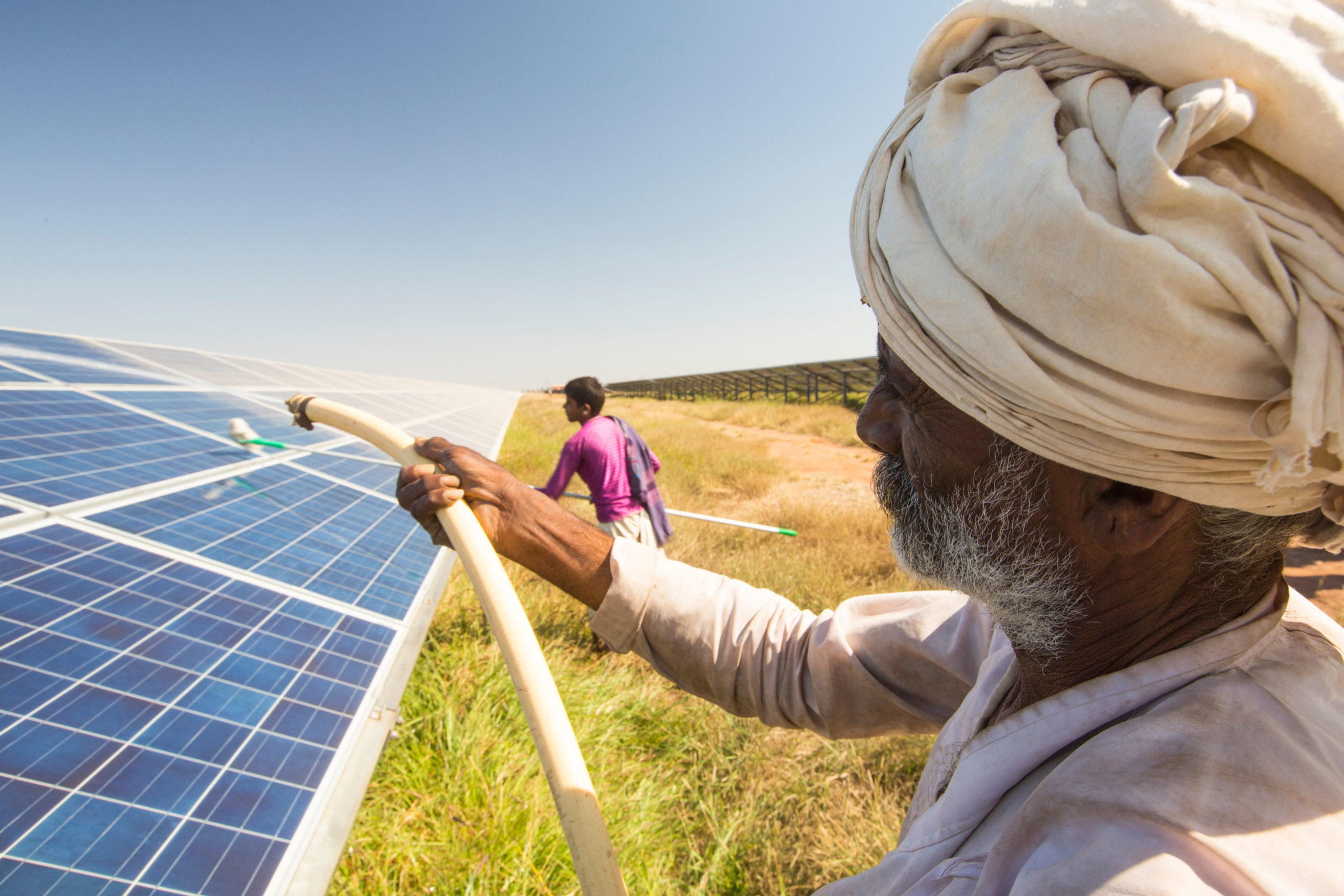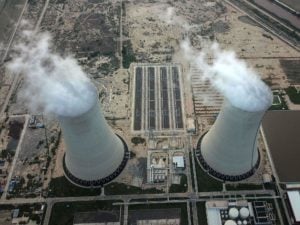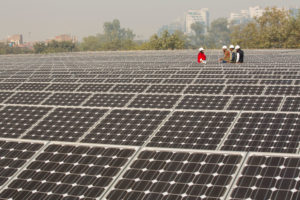Putting a price on carbon is seen by many as the ultimate solution to compel countries to reduce their heat-trapping emissions. Beyond a ‘carbon tax’ on polluting activities, some advocate for a system that provides a further financial incentive to reduce emissions: a carbon trading market.
However, as numerous experiments have proven, the straightforward principle of ‘making polluters pay’ is hard to put into practice.
• What are carbon markets and how do they work?
• What are carbon credits and carbon offsets?
• Where do carbon markets exist?
• Are there any carbon markets in India and South Asia?
• Why are carbon markets controversial?
• What does the Paris Agreement say about carbon trading?
What are carbon markets and how do they work?
Carbon markets are also known as emissions trading schemes. They are agreements in which countries or other entities, such as businesses, exchange permits to emit carbon dioxide, often known as carbon credits.
Under a carbon trading market, nations or companies can reduce their carbon emissions to below certain agreed levels and sell the leftover emissions ‘allowance’ – in the form of carbon credits – to others that are still polluting beyond these limits. In theory, this provides a financial incentive to reduce emissions.
Carbon markets are widely seen as a way to capture the costs of climate change, including more frequent and intense heatwaves, storms, floods, droughts and sea level rise. Despite being driven by the use of fossil fuels, the costs involved in preparing for these climate disasters – and rebuilding after they have struck – are not directly accounted for in the price of fossil fuels. Instead, these costs – or externalities – are usually borne by citizens and governments, including those who have little past or present responsibility for the greenhouse gases present in the atmosphere today. A carbon market could in theory shift these costs onto the polluters, who would have to spend money to purchase more credits to enable polluting activities to continue.
What are carbon credits and carbon offsets?
There are two main types of carbon trading: credits and offsets. Carbon credits, which are essentially tokens representing future emissions, are issued by governments to companies. Only those which emit less than their ‘allowance’ – and so end up with excess credits – can then trade them on the market.
Carbon offsets are created by and traded between companies. If a company does something to remove carbon from the atmosphere, such as planting trees, it may count this as a carbon offset, and trade it with other organisations in the market. Individuals can also ‘offset’ their carbon emissions, generated by high-carbon activities such as flying, by donating to carbon removal projects, such as forestry programmes or renewable energy development.
Where do carbon markets exist?
Currently, there is no global carbon market. However, there are 68 carbon pricing programmes at regional, national and subnational levels. The biggest national carbon market was launched by China, the world’s largest emitter, in 2021, overtaking the European Union’s Emissions Trading System (ETS), which covers 40% of the EU’s total emissions.
Are there any carbon markets in India and South Asia?
Countries in South Asia are yet to adopt national carbon trading systems, although most are exploring their potential. According to the World Bank, Pakistan is considering an emission trading scheme.
India is reportedly starting to explore a comprehensive carbon market, although this is at an early stage, with little detail available on how a nationwide carbon trading market would work.

India currently has two market-based emission reduction schemes: Perform, Achieve and Trade (PAT) and Renewable Energy Certificates (REC). The PAT scheme rewards energy efficiency gains in energy-intensive industries such as thermal power, cement, iron and steel. Operators in these sectors set targets to reduce their energy consumption. If they exceed these targets, they are rewarded with credits they can trade. Renewable Energy Certificates encourage businesses to purchase and exchange credits based on the amount of clean energy produced, a measure that so far has had limited success, with little uptake in most Indian states.
Most recently, the relatively wealthy state of Gujarat announced plans to roll out the country’s first fully fledged carbon market, which if successful could become the blueprint for carbon trading in India.
A potential nationwide carbon market in India, the details of which have not been disclosed, would replace these experiments.
Why are carbon markets controversial?
Critics argue that carbon trading allows rich countries to avoid reducing their greenhouse gas emissions by simply purchasing as many credits as they need to maintain a highly polluting status quo.
While most policy experts and economists agree that putting a price on greenhouse gas emissions is a useful part of an overall strategy to reduce their concentration in the atmosphere, carbon markets have in practice been fraught with imperfections. For example, credits need to be scarce to keep prices high. The EU Emissions Trading System initially failed after its 2005 launch because there were too many carbon allowances on the market. Over time, the price of these credits has fluctuated as the EU has been attempting to better regulate their circulation.
Another issue governments are trying to solve is carbon leakage, which occurs when companies move their polluting operations to other countries where carbon emissions are not strictly regulated, so they don’t have to pay for credits to cover the pollution they generate. To curb this risk, in 2021 the EU approved the Carbon Border Adjustment Mechanism (CBAM), under which EU importers would match the cost of carbon emissions from goods they buy from outside the bloc, as if they were part of the EU Emissions Trading System. However, experts in developing countries that export carbon-heavy products to the EU have argued that this would severely damage their economies, in turn hampering their energy transition efforts. Most recently, in June 2022 the CBAM framework and a proposed revision to the EU’s Emissions Trading System were rejected by the European Parliament in their original form, reopening the debate.
When it comes to offsets, the carbon removal capacity of many projects involved in such schemes, such as tree planting and converting waste to energy, has been questioned, because these activities’ capacity to absorb carbon is hard to measure and depends heavily on how each project is managed. These issues could reduce the effectiveness of the trading systems that rely on them.
What does the Paris Agreement say about carbon trading?
The 2015 Paris Agreement includes a section, the hotly debated Article 6, which addresses carbon markets specifically. Rather than a clear obligation under the Agreement, they are referred to as ‘voluntary cooperation’ towards meeting countries’ respective climate goals.
Six years later, at COP26 in Glasgow, countries agreed on a ‘rulebook’ setting out guidelines for countries to monitor and report their emissions in a uniform manner. The rulebook also addresses the risk of double counting, which could occur if the same reduction is counted against the goals of both those selling and those purchasing carbon credits.









